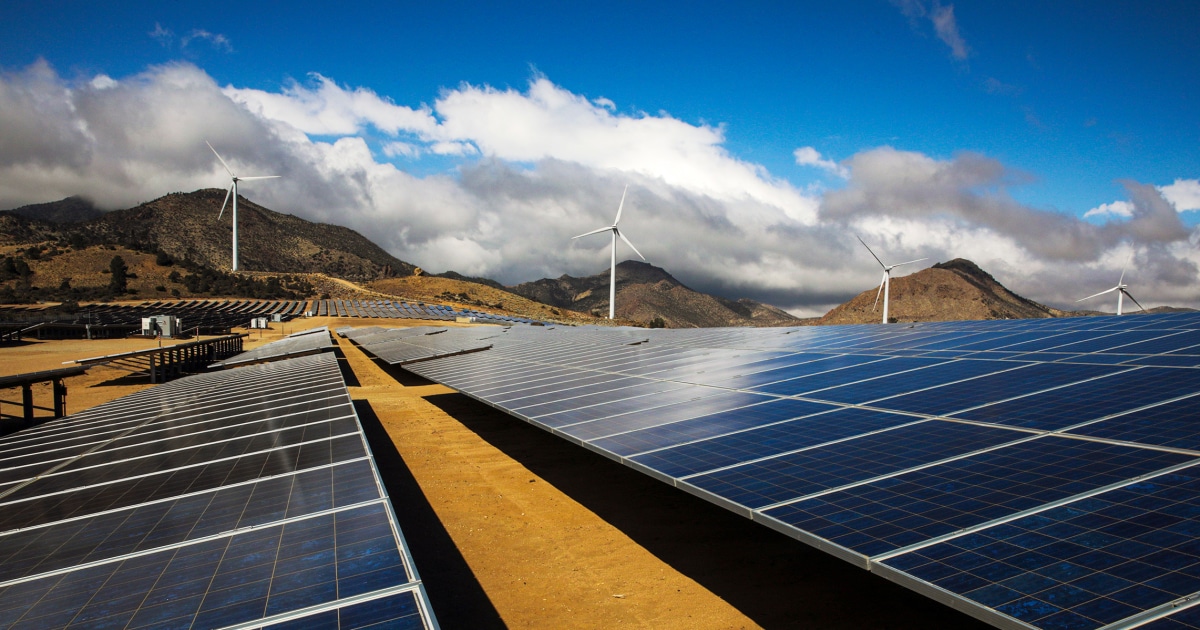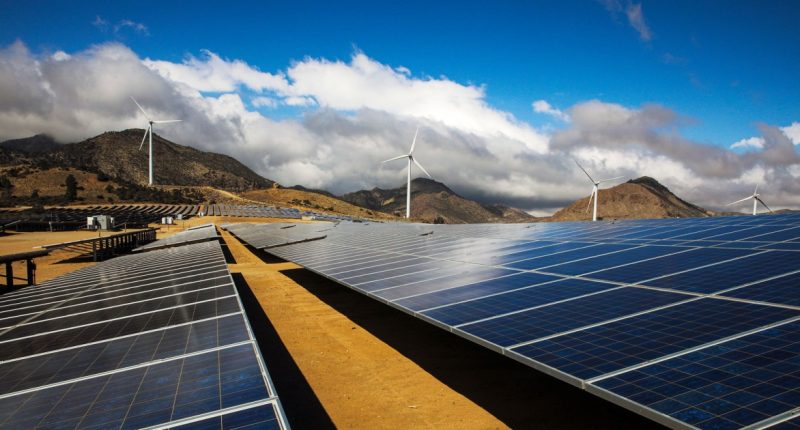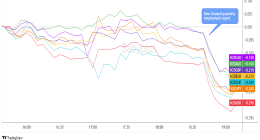
SAN DIEGO — Amid humanity’s hottest-ever summer months, California, home of the hottest place on Earth, has enjoyed a relatively cool and stress-free energy supply.
A test of the grid’s resolve may be in store this week, as the California Independent System Operator (Cal-ISO) braces for triple-digit temperatures in the state’s inland valleys and deserts.
Experts say California’s increasing reliance on renewable energy, and its rapidly growing ability to store nature’s bounty on lithium-ion batteries, has better prepared it to face a warming planet while also maintaining a device-crazed, climate-controlled lifestyle.
“Solar is making heroic appearances during the day this summer,” Jan Kleissl, professor of renewable energy and energy flows at the University of California, San Diego, said by email.
In May, the grid operator recorded a historic high mark for solar energy production — more than 15,000 megawatts.
Cal-ISO in July also celebrated the near doubling, since 2022, of the state’s lithium-ion battery storage capacity, critical to ensure renewables like solar energy are usable after dark.
In an announcement last month, Cal-ISO said the state’s concentration of lithium-ion battery storage was the largest in the world and had reached 5,600 megawatts. Megawatt energy demand this summer has been in the low- to mid-40,000s, Cal-ISO spokesperson Anne F. Gonzalez said.
“Batteries are the new kid on the block,” Kleissl said. “Batteries are able to shave off the evening peak from 6 to 9 p.m., which greatly relieves the grid stress.”
Hydroelectric power has also made a strong if not historic showing through summer thanks to the state’s record winter snowpack, according to Cal-ISO and state energy experts.
Energy surplus
Last year, 28% of the energy delivered on an average August day came from renewable sources. In May, the latest month available, that figure was nearly 45%, according to Cal-ISO data.
The state plans to plug into more wind power, as Cal-ISO’s board approved a plan that could bring up to 3,000 megawatts of wind power from Wyoming later in the decade, Deb Le Vine, Cal-ISO’s infrastructure director, said in an announcement last month.
So far this summer, the grid has been operating with a surplus of power.
Severin Borenstein, professor at the Haas School of Business at UC Berkeley and a member of the ISO Board of Governors, said California’s good fortune so far this summer has benefitted neighboring states.
“The Western grid, after taking California out, has set new demand records this year,” he said by email. “Just as neighboring states have helped us get through very tight supply conditions in the past, most recently last September, we have been helping them out this year.”
People power
But there’s more to credit for the grid’s surplus than just renewable energy.
Energy demand has been relatively low despite sizzling temperatures in the deserts and valleys. More than two-thirds of the state’s nearly 40 million people live along the coast, where temperatures have largely been normal or below normal.
Cal-ISO’s Gonzalez notes that this week’s expected peak demand, forecast to reach nearly 46,000 megawatts on Wednesday, is relatively tame compared to that of usage on Sept. 6, 2022, during a scorching heatwave: 52,061 megawatts, the most ever.
California may also have a not-so-secret weapon when the heat is on: its people.
“The folks in California who are the rate payers are doing a damn good job, and should get a lot of credit for managing electricity,” said Stephanie Pincetl, director of UCLA’s Center for Sustainable Urban Systems.
High temps ahead
During the 2022 September heat wave, Cal-ISO issued FlexAlert notices seven days straight. The alerts ask Californians to cut back on energy use, especially in the early evening. Despite the megawatts consumed, it could have been worse, experts say.
The easing of potential demand during that heat wave appeared to have thwarted potential mandatory rolling blackouts, a tool unmentioned by Cal-ISO in its statement on the week’s heat-wave preparations.
This week, Cal-ISO is asking Californians to prepare for the possibility of FlexAlerts.
Heat advisories through at least Thursday covered much of the state inland of its coastal mountains and terrain, with temperatures expected to reach as high as 108, according to the National Weather Service. Death Valley could reach 118 on Thursday, it said.
“You shouldn’t underestimate that people are willing to help,” Pincetl said.
Source: | This article originally belongs to Nbcnews.com










